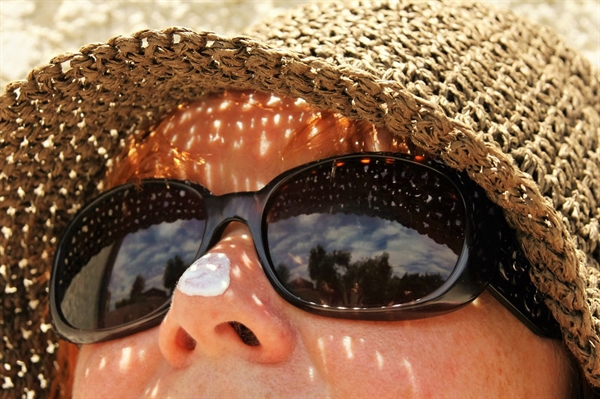 RICHMOND—Slathering on sunscreen isn’t only for a day at the beach; it’s just as essential on the farm and at other outdoor work settings.
RICHMOND—Slathering on sunscreen isn’t only for a day at the beach; it’s just as essential on the farm and at other outdoor work settings.
The Centers for Disease Control and Prevention reports skin cancer is on the rise. Each year 4.3 million people in the U.S. are treated for basal cell cancer and squamous cell skin cancer, and in 2018, there were an estimated 1.3 million people living with skin melanomas.
Farmers and their employees are among the groups most at risk. While experts advise everyone to limit time spent outdoors during the hottest part of the day—between 10 a.m. and 2 p.m.—many farmers need those crucial daylight hours.
“The major factor is the amount of time that farmers spend in the sun,” explained Dana Fisher, chair of the Virginia Farm Bureau Federation Farm Safety Advisory Committee. “Whether it is planting in the spring, caring for fields and animals in the summer, harvesting in the fall, or the fall and winter calving seasons, any exposure to the sun without protecting your skin can lead to an increased risk of skin cancer.”
With the CDC projecting 106,110 new cases of skin melanomas and 7,180 deaths from skin cancer in 2021, it’s important to stay mindful about combating the sun’s intense rays.
Regularly apply broad spectrum, sweat- and water-resistant sunscreen with a sun protection factor of 15 or higher to all exposed skin—including ears, hands, neck and lips—and reapply at least every two hours. Broad spectrum sunscreens offer protection against both UVA and UVB rays, two types of ultraviolet rays that cause sunburns, premature skin aging, and increased skin cancer risk. Follow the directions on the sunscreen’s label to ensure proper application.
Wearing long sleeves, pants, broad-brim hats, and sunglasses also can help block harmful rays, particularly if they’re sun-protective.
In addition to sun exposure and sunburns, Fisher added there are other risks tied to working outside in scorching temperatures.
“With pressure to take advantage of sunny days for making hay and tending other crops, farmers are always pushing their personal limits,” Fisher said. “Heatstroke and dehydration can happen quickly if farmers do not take measures to keep themselves cool and hydrated.”
Signs of heatstroke include weakness, confusion, nausea and headache. Fisher advised taking frequent breaks to cool off and drinking lots of fluids when working in the heat.

